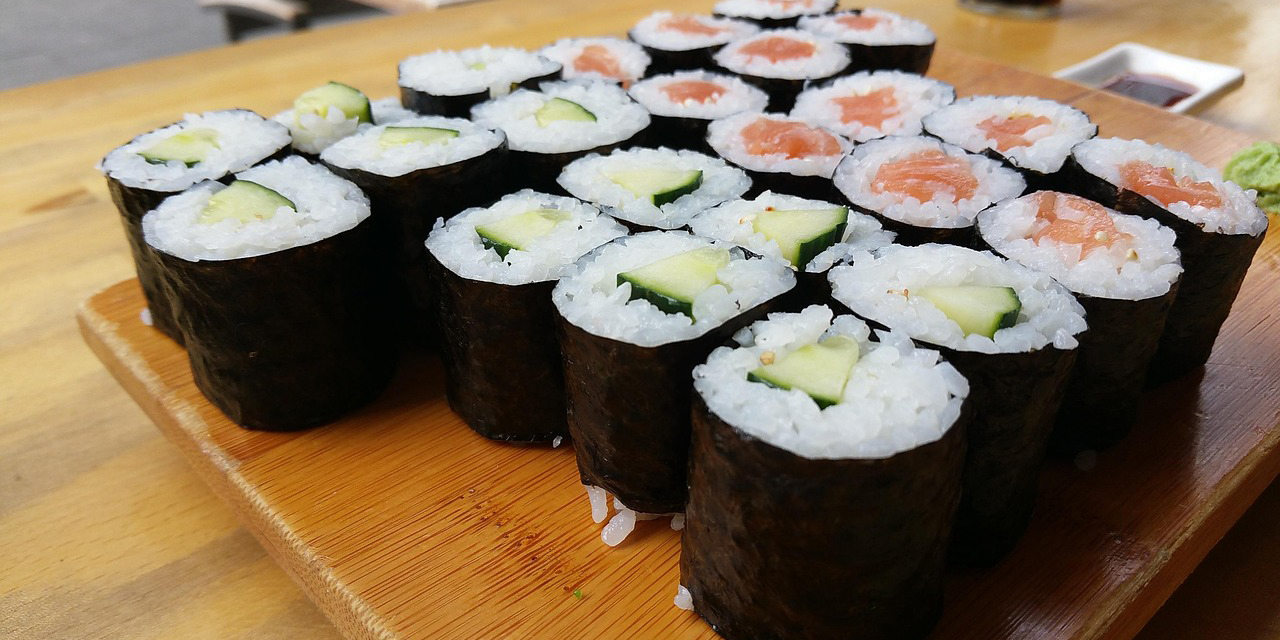Foolproof Steps To Homemade Sushi Rolls
Do you love sushi but feel intimidated by making it at home? What if we told you that crafting your sushi rolls is not only doable but also a fun and creative experience? Whether you're hosting a sushi night or craving a fresh, homemade roll, this guide will walk you through every step. Get ready to impress your taste buds and friends with perfectly crafted sushi rolls made right in your kitchen.
Why Make Sushi At Home?
Making sushi at home offers endless possibilities. You can customize flavours, experiment with fillings, and save money while enjoying restaurant-quality rolls. Plus, it's a great way to use fresh, healthy ingredients.
Fun Fact: Sushi isn’t just raw fish! The word "sushi" refers to vinegared rice, and you can fill your rolls with anything from veggies to cooked seafood.
Essential Ingredients For Homemade Sushi
Before you roll, gather these key ingredients:
Sushi Rice
Short-grain or medium-grain rice works best. It becomes sticky when cooked, making it perfect for rolling.

Rice Vinegar
Adds the signature tang to sushi rice.
Nori (Seaweed Sheets)
Thin, dried sheets of seaweed that hold the roll together.
Fillings
Think of fresh fish like salmon or tuna, cooked shrimp, crab, avocado, cucumber, carrots, or even cream cheese.
Soy Sauce
For dipping your rolls.
Pickled Ginger And Wasabi
Optional but traditional accompaniments.
Must-Have Tools For Sushi Rolling
While sushi rolling doesn’t require a lot of equipment, a few tools can make the process smoother:
Bamboo Rolling Mat (Makisu)
Essential for shaping your rolls. Wrap it in plastic wrap for easier cleanup.
Sharp Knife
A sharp blade ensures clean cuts. A dull knife can tear the roll.
Rice Paddle Or Wooden Spoon
It helps mix the rice without crushing it.
Small Bowl Of Water
To keep your hands wet while handling sticky rice.
Step-By-Step Guide To Making Sushi Rolls
1. Cook And Season The Rice
Perfect sushi rice is the foundation of any good roll.
1. Rinse 1 cup of sushi rice in cold water until the water runs clear.
2. Cook the rice using a rice cooker or on the stovetop. Follow the package instructions for water-to-rice ratios.
3. While the rice is cooking, heat 1/4 cup of rice vinegar, one tablespoon of sugar, and 1/2 teaspoon of salt in a small saucepan until dissolved.
4. Once the rice is cooked, transfer it to a large bowl and gently fold in the vinegar mixture. Let it cool to room temperature.
2. Prepare Your Fillings
While the rice cools, prep your fillings:
• Slice fish and vegetables into thin, even strips.
• If using cooked ingredients like shrimp or crab, ensure they’re fully prepared and ready to go.
Pro Tip: Keep your fillings uniform in size to make rolling easier and ensure even bites.
3. Assemble Your Rolling Station
Set up a clean, flat workspace with all your ingredients and tools within reach. Place your bamboo mat on the surface, and wrap it in plastic if desired.
4. Lay Out The Nori
Place a sheet of nori, shiny side down, on the bamboo mat. The rough side should face up as it better grips the rice.

5. Spread The Rice
With wet hands, grab a handful of rice and spread it evenly across the nori, leaving a 1-inch border at the top. Don’t press too hard—keep the rice light and fluffy.
Pro Tip: Dip your fingers in a small water bowl to prevent the rice from sticking to your hands.
6. Add Fillings
Arrange your fillings horizontally across the rice, about 1 inch from the bottom edge. Be careful not to overfill, as this can make rolling difficult.
7. Roll The Sushi
This is where the magic happens:
1. Lift the bottom edge of the bamboo mat and gently roll it over the fillings.
2. Use your fingers to tuck the roll tightly as you go.
3. Continue rolling until you reach the top edge of the nori. The 1-inch border of nori acts as a seal. Wet it lightly with water to help it stick.
8. Slice The Roll
Place the roll seam-side down on a cutting board. Use a sharp knife to slice it into even pieces. Wipe the knife with a damp cloth between cuts to keep it clean and sharp.
Popular Sushi Roll Ideas
Ready to experiment? Here are some classic and creative rolls to try:
California Roll
Imitation crab, avocado, and cucumber.

Spicy Tuna Roll
Sushi-grade tuna mixed with spicy mayo and scallions.
Philadelphia Roll
Smoked salmon, cream cheese, and cucumber.
Vegetarian Roll
Avocado, cucumber, carrots, and bell peppers.
Dragon Roll
Eel, cucumber, and avocado, topped with sliced avocado and a drizzle of eel sauce.
Presentation Tips For Sushi Rolls
Presentation is key to making your homemade sushi feel restaurant-worthy.
Garnish
Sprinkle sesame seeds or thinly sliced scallions on top of the rolls.
Serve With Style
Arrange rolls on a clean, flat plate with pickled ginger, wasabi, and a small bowl of soy sauce on the side.
Add Color
Use colourful ingredients like an orange fish roe or bright green avocado to make your rolls visually appealing.
Troubleshooting Common Sushi Problems
Is Your Roll Falling Apart?
Use less filling and ensure your rice layer is even. Rolling tightly also helps.
Rice Too Sticky?
Keep your hands wet, and use a rice paddle to spread the rice gently.
Dull Knife?
A sharp knife is essential for clean cuts. Hone your knife before slicing.
Why Homemade Sushi Is Worth It
Making sushi at home allows you to control every aspect of the process, from the ingredients' quality to the rolls' creativity. It's a fun way to learn a new skill, bond with family and friends, and enjoy a healthier, fresher version of this beloved dish.
Fun Fact
Sushi is as much about the experience as it is about the food. Japanese culture emphasizes mindfulness and appreciation during the preparation and eating of sushi.
Take Your Sushi Skills To The Next Level
Once you’ve mastered the basics, try experimenting with advanced techniques:
Inside-Out Rolls
Place the rice on the outside of the roll instead of the nori.
Nigiri
Hand-moulded rice topped with a slice of fish.
Decorative Rolls
Create intricate patterns using colourful ingredients.
Get Rolling!
Homemade sushi rolls are a delicious way to explore your culinary creativity. With practice, you'll perfect your technique and discover your favourite combinations. So why wait? Gather your ingredients, roll up your sleeves, and dive into the art of sushi-making. It's a skill that will impress your friends and keep your taste buds returning for more!





